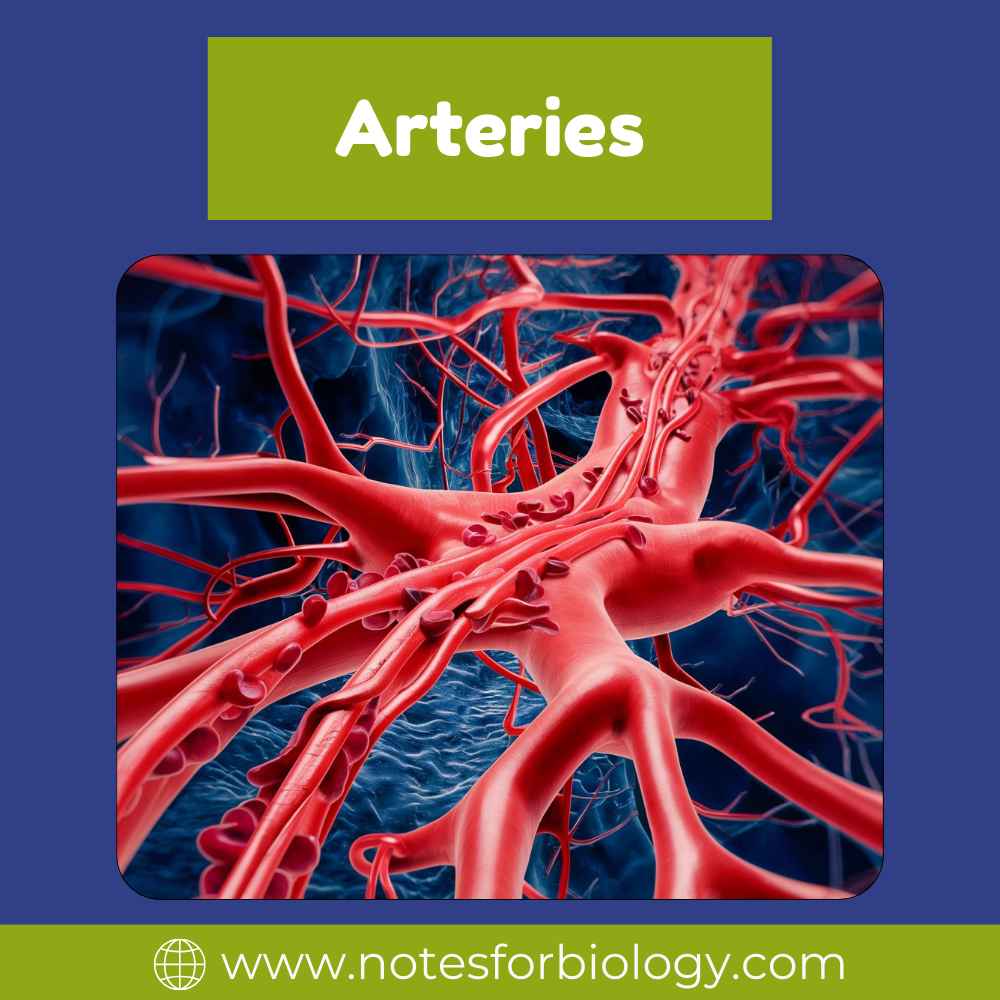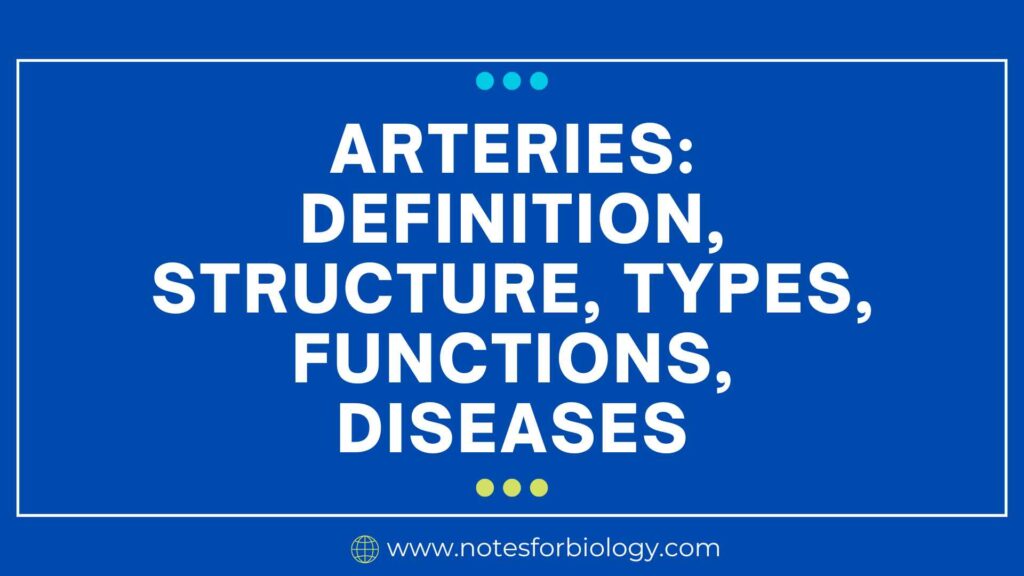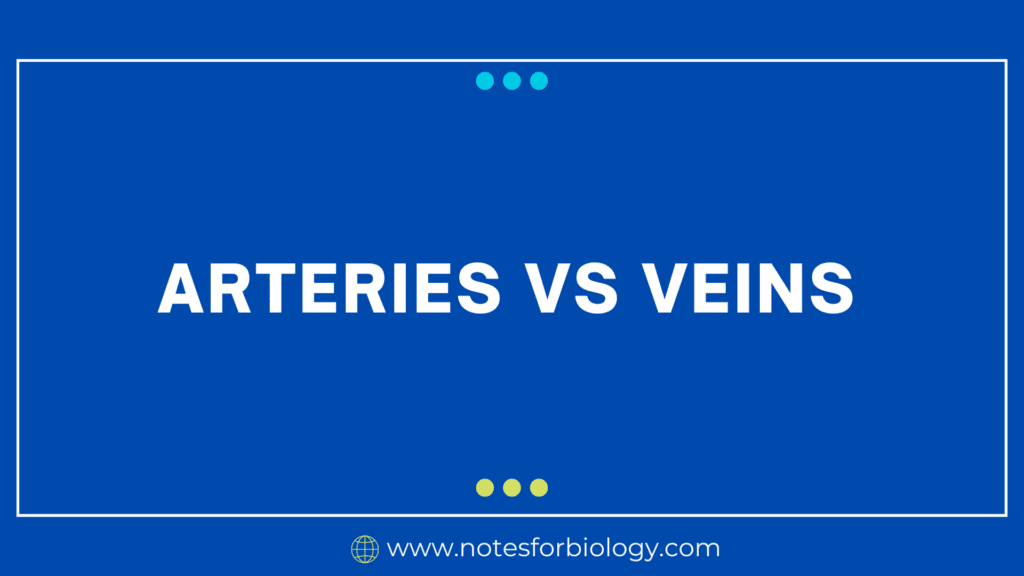Arteries are the essential components of the cardiovascular system, which carry oxygen-rich blood from the heart to the body’s tissues and organs. Life depends on this effective and constant blood flow because it provides the nutrition and oxygen cells require to function correctly and eliminates waste products from metabolism.
Table of Contents
Definition

Blood arteries are the blood vessels that transport oxygenated blood from the heart to the body’s organs and tissues. Their main job is to carry oxygenated blood from the heart to the tissues and organs, supplying them with the nutrition and oxygen they require to operate. The pulmonary, which transport deoxygenated blood from the heart to the lungs for oxygenation, are the only exceptions to this rule.
Structure
They have a complex structure designed to withstand high pressure and ensure efficient blood flow:
- Tunica Intima: The innermost layer, which lowers friction and permits smooth blood flow, is made up of a single layer of endothelial cells.
- Tunica Media: The middle layer, which is made up of elastic fibers and smooth muscle cells, permits the artery to dilate and contract in response to each heartbeat, controlling blood flow and pressure.
- Tunica Externa (Adventitia): The outermost layer, consisting of elastic and structurally supporting connective tissue.
Types
They can be categorized according to their size, composition, and purpose. Muscular arteries, arterioles, and elastic arteries are the three main types.
1. Elastic Arteries
Characteristics:
- The aorta and its main branches, the carotid and subclavian arteries, are among the largest in the body.
- They may stretch and recoil with every heartbeat because their tunica media contains a high concentration of elastic fibers.
Functions:
- Buffering Pressure Changes: By reducing the spike in blood pressure brought on by heartbeats, the elasticity promotes more steady blood flow.
- Conducting Blood: They are essential passageways for blood that carry oxygen from the heart to the smaller arteries.
Examples: Aorta, Pulmonary Arteries, Common Carotid Arteries.
2. Muscular Arteries
Characteristics:
- Blood is distributed throughout the body by these medium-sized arteries.
- The fraction of smooth muscle cells in the tunica medium is higher than that of elastic fibers.
Functions:
- Controlling Blood Flow: The smooth muscle in these permits them to dilate and constrict, which in turn regulates how much blood gets sent to various parts of the body.
- Maintaining Blood Pressure: They aid in blood pressure regulation by changing their diameter.
Examples: Radial artery, femoral artery, coronary arteries.
3. Arterioles
Characteristics:
- They are the smallest and enter the capillary networks straight.
- Its tunica externa is comparatively thin, and their tunica media is primarily made up of smooth muscle cells.
Functions:
- Regulating Blood Flow to Capillaries: Arterioles govern blood flow to capillary beds by dilation and constriction, which in turn affects cellular exchange of gasses, nutrition, and waste products.
- Controlling Systemic Blood Pressure: Both blood pressure and total vascular resistance are significantly impacted by their capacity to modify diameter.
Examples: Precapillary arterioles in various tissues.
Functions
- Transport Oxygenated Blood: The body’s arteries carry oxygen-rich blood from the heart to all of the tissues and organs.
- Regulate Blood Pressure: They aid in the maintenance and regulation of blood pressure by contracting and relaxing the smooth muscle in their walls.
- Distribute Hormones and Nutrients: Cells get vital substances such as hormones and nutrients from them.
- Remove Waste Products: Waste products from metabolism are transported by them to the liver, kidneys, and lungs for elimination or detoxification.
Diseases
- Atherosclerosis: A disorder that causes fatty deposits, or plaques, to accumulate on the inside walls of them, causing them to narrow and become rigid. This may lead to decreased blood flow and raise the possibility of strokes and heart attacks.
- Hypertension: Excessive blood pressure, which over time can cause artery damage and other cardiovascular disorders.
- Arteriosclerosis: This broad term refers to the hardening and thickening of artery walls; it is frequently associated with age and hypertension.
- Aneurysm: An irregular artery wall bulge that has the potential to rupture and cause life-threatening internal hemorrhage.
In conclusion, they are vital blood vessels that are necessary for life, and maintaining their health is critical to general health. To preserve cardiovascular health and minimize major health problems, it is essential to comprehend their structure, functions, and the diseases that may impact them.
Frequently Asked Question(FAQ)
What are arteries?
Blood arteries are the blood vessels that transport oxygenated blood from the heart to the body’s organs and tissues.
What are the main types of arteries?
Based on their size, structure, and function, they can be divided into three primary groups: arterioles, muscle and elastic arteries.
Related Articles


